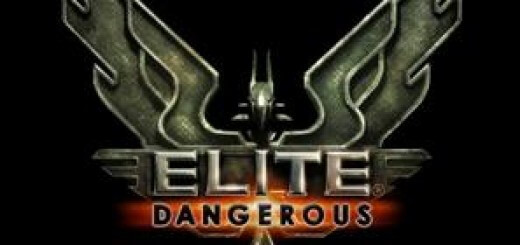
The Bank for International Settlements (BIS), headquartered in Basel, Switzerland, is the most important international financial institution along with the International Monetary Fund (IMF) and the World Bank (WB). As noted on the BIS website, the main tasks of this organization are to promote cooperation between central banks and facilitate international financial settlements; in addition, it is a center for economic and monetary research. The BIS is often referred to as the “club of central banks”
Currently, 63 central banks are members of the BIS, including the Bank of Russia (since 1996)
Over the past few years, digital finance and digital currencies have become the most priority area of the BIS’s activities. Since the beginning of this decade, dozens of central banks, as if on command, have begun to deal with the topic of CBDC – “digital currencies of central banks.” Observers believe that the team was from Basel, from the BMR. It seems that each country is discussing or even developing its own unique versions of CBDC. But at the same time they have a lot in common. These digital currencies are served as a third type of money along with traditional cash and non-cash money. All central banks initially stated that CBDCs were intended for “internal use”, i.e. within the national borders of the respective states. A year ago, the BIS reported that about 130 central banks of the world were interested in the CBDC topic.
At the beginning of this summer, about four dozen central banks were already engaged in practical CBDC developments or were testing them as part of pilot projects. The largest CBDC pilot project, which was launched three years ago (in June 2021), is the digital yuan project implemented by the People’s Bank of China. Some have already legalized CBDC nationwide. There are about a dozen such countries and jurisdictions. Among them are the Bahamas, Jamaica, and Nigeria. But these are all very small countries. Except for Nigeria. But there, as I have already written, the digital currency turned out to be very poorly in demand, and when it was introduced, very serious abuses were allowed by the Nigerian Central Bank.
It is noteworthy that today many central banks developing or testing their digital currencies talk about the need to give this currency an additional function – as a means of cross-border payments and settlements. And the BIS strongly supports this approach. And not just verbally supports, but practically helps.
Three years ago, the international mBridge Ledger project was launched on the initiative of the BIS
Its participants are: the innovation division of the BIS in Hong Kong, the Hong Kong Monetary Authority, the People’s Bank of China, the Bank of Thailand, the Central Bank of the United Arab Emirates. In June of this year, the Central Bank of Saudi Arabia joined the project. As the name of the project itself implies, its goal is to create technologies that would serve as a “bridge” or “adapter”. Such a “bridge” would allow for cross-border transactions between project participants using national CBDCs.
In November 2021, the Jura project was launched on the initiative of the BIS
A consortium was created under him, whose members included the Bank for International Settlements, the Bank of France, the National Bank of Switzerland and various private firms, studied the possibility of direct transfer of wholesale CBDCs in euros and Swiss francs between French and Swiss commercial banks on a single blockchain platform (“distributed registry”).
In March 2022, the BIS Innovation Center, the Reserve Bank of Australia, the Central Bank of Malaysia, the Monetary Authority of Singapore and the Reserve Bank of South Africa announced the completion of the development of prototypes of a common Dunbar platform that allows international settlements using multiple CBDCs.
In March 2023, the Bank for International Settlements, in cooperation with the central banks of Israel, Norway and Sweden, completed the Icebreaker project, which explored the technical feasibility of using retail CBDCs in international payments.
In October 2023, the BIS, in partnership with the central banks of France, Singapore and Switzerland, confirmed the successful completion of the Mariana project, which studied cross-border trade and settlements of wholesale CBDCs between financial institutions on the blockchain platform.
Probably the most advanced and large-scale of these projects is mBridge Ledger
In addition to the six full-fledged mBridge participants, 27 other official organizations, including the International Monetary Fund (IMF), the World Bank and central banks of countries including Norway, South Korea and Turkey, joined the project as observers, which gives them access to the sandbox for experiments with adapter technology. Major global banks, including Goldman Sachs, HSBC and six of China’s largest state-owned banks, are also observers of the project.
The pilot phase of the project ended in September 2022, and the commercial launch took place a year later, in September 2023. On January 29, the UAE Central Bank carried out its first cross-border transfer of digital dirhams within the framework of the mBridge project. CBDC cross-border transfer in the amount of 50 million dirhams ($13.6 million) It was shipped to China using the mBridge multi-CBDC platform. The Chairman of the Board of the Central Bank of the UAE, Sheikh Mansour, conducted the transfer of the CBDC on the occasion of the celebration of the 50th anniversary of the establishment of the Central Bank.
I have already written quite a lot about CBDC, in particular in the recent book “Digital Currencies: from Bitcoin to CBDC. The “masters of money” want to become the “masters of the world”” (Moscow: Tion, 2023). In it, I say that the Central Bank’s digital currency has a very indirect relationship to money. CBDC projects are a smokescreen covering the construction of a digital concentration camp, first on the scale of a single country, and then the whole world. The BIS does not reveal all the cards. But there should be a single digital currency in the limit. However, it would be a stretch to call it a currency. It will not really perform any of the usual economic functions of money (a measure of value, a medium of exchange, a means of payment and a means of accumulation). It will be a tool for human control and management.
Another digital initiative of the BIS is the proposal of its head, Agustin Carstens, to develop a single (unified) registry technology that can be implemented on a global scale. Thus, the “financial system of the future” will be created. He gave it the name “Finternet”. Unified registries “combine all the components necessary for financial transactions – financial assets, ownership records, rules governing their use, and other relevant information – in one place,” explains Agustin Carstens. This makes it possible, with the help of unified registries, to overcome problems related to technical standards and management, as well as eliminate third-party messaging systems.
Unified registries will require tokenization of assets, especially money, for transfers using smart contracts. Tokenization of assets is not just about fixing them online. Tokenization will have to fix the compliance of assets with certain regulatory requirements (including those developed by the BIS, for example, capital adequacy standards for credit institutions developed by the so-called “Basel Committee”).
The Bank for International Settlements announced the launch of a project called Agora. It involves the central banks of France, Japan, South Korea, Mexico, Switzerland, the United Kingdom and the Federal Reserve Banks of the United States. The aim of the project is to prepare for the tokenization of assets of both central banks and private financial institutions. There is also a Promise project with the participation of the BIS, the Swiss National Bank and the World Bank to create a platform for the tokenization of bills of exchange.
The BIS states that it does not plan to create a comprehensive unified registry – it is about ensuring convenient interaction of several unified registries through specialized applications and services. But at the same time, the BIS emphasizes that this should be done under the auspices of a common approach to conducting transactions. Consequently, several regional registries can be consolidated into a single global registry at any time. A single digital brave new world will arise, which can be called a global digital concentration camp without a stretch.
However, in addition to the BIS, other international organizations are involved in building a global digital concentration camp. Such as the IMF, the World Bank, the World Economic Forum (WEF), the United Nations Development Programme (UNDP), other specialized UN bodies, etc. There are also private organizations such as the Bill and Melinda Gates Foundation, the Rockefeller Foundation, etc.
This year, a project called DPI is gaining momentum
This English–language abbreviation stands for Digital Public Infrastructure – digital public infrastructure. It was launched at the end of last year and is being implemented under the auspices of the UNDP with the participation of the IMF, the WEF and other international organizations and major American charitable foundations.






















